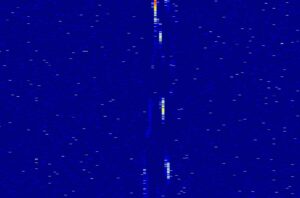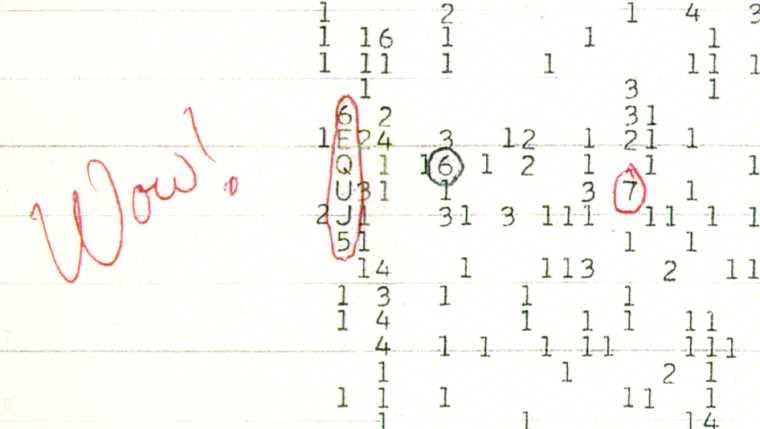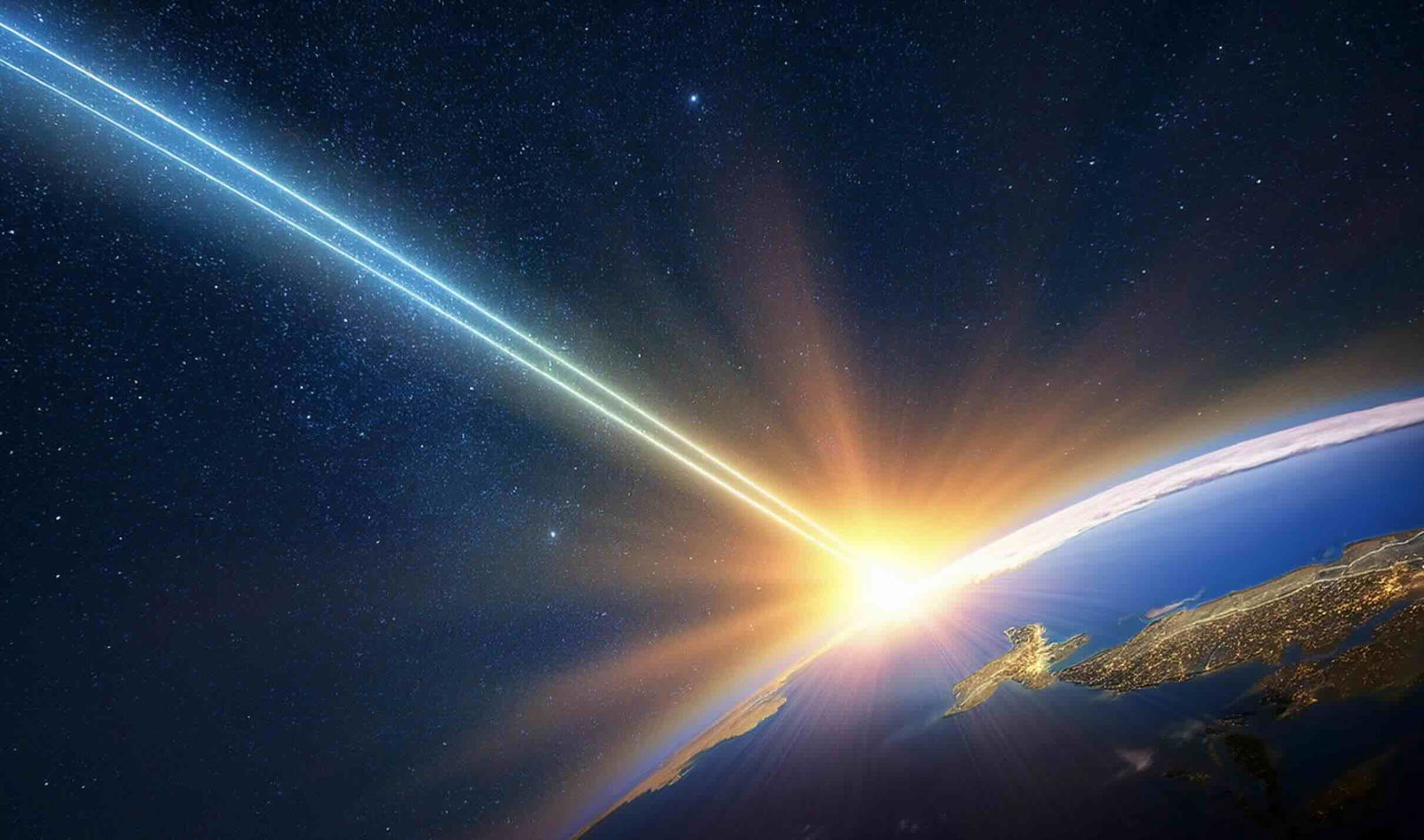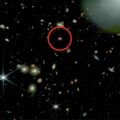A team of scientists from the Planetary Habitability Laboratory (PHL) at the University of Puerto Rico at Arecibo believe they may have finally solved the 47-year-old mystery of the infamous “Wow! Signal.”
Detected by the Ohio State University Big Ear Telescope on August 15th, 1977, the Wow! Signal got its name because astronomer Jerry R. Ehman was so impressed he wrote “WOW” in the signal printout’s margins. Since then, the signal has continued to fascinate the scientific community, including the possibility that it may have been sent by an extraterrestrial civilization light years from Earth due to its high power, strong signal-to-noise ratio, and narrow bandwidth.
Unfortunately, various efforts to detect a repeat of the signal, which had a frequency and duration that didn’t match any known natural phenomenon, have come up empty, leaving the exact nature and origin of the potentially artificial signal unsolved. Several efforts in the ensuing decades have tried to offer potentially natural explanations for the signal. However, those attempts have also come up short of providing a definitive solution, leaving scientists to wonder if the Wow! Signal was indeed of extraterrestrial origin.
Now, the PHL’s lead researcher, Professor Abel Méndez, and his colleagues say that the vast amount of data they collected with the Arecibo’s iconic 305-meter telescope before it collapsed in 2020, as well as additional data collected by the facility’s 12-meter telescope since 2023, has led them to a potentially ‘astronomical’ solution to this enduring mystery.


“The Wow! Signal may have been caused by a unique astrophysical event: the sudden brightening of a cold hydrogen cloud due to stimulated emission from a transient strong radiation source, such as a magnetar flare or a soft gamma repeater (SGR),” Méndez told The Debrief. “These rare events might cause hydrogen clouds to momentarily shine much brighter, potentially explaining the fleeting nature of the Wow! Signal.”
Potentially Historic Findings Included Data from the Infamous 305-Meter Telescope
In that same email, Professor Méndez explained that the original intent of their new research effort was to look for signals similar to the Wow! Signal around various celestial objects that may have been captured and archived by the 305-meter telescope. This included scans performed in the 1GHz to 10GHz range between 2017 and 2020.
With a long list of impressive astronomical accomplishments that Méndez says “contributed to numerous groundbreaking discoveries in radio astronomy, atmospheric science, and planetary radar,” the 305-meter telescope became world famous after it was featured in the 1997 film Contact based on the book by astronomer Carl Sagan and starring Academy Award-winning actor Jodie Foster.
The team’s search of the 305-meter telescope’s archived data was enhanced by new data collected by the facility’s 12-meter telescope, which began scanning the area around red dwarf stars with potentially habitable planets at 8 GHz starting in 2023. According to Méndez, the effort found numerous signals similar to the Wow! Signal within the 305-meter telescope data, including signals near the 1420 MHz hydrogen line.


“Our latest observations, made between February and May 2020, have revealed similar narrowband signals near the hydrogen line, though less intense than the original Wow! Signal,” said Méndez.
Since the team’s findings were so similar to those of the WOW signal that it may have solved the 47-year-old mystery, Méndez told The Debrief they ultimately decided to forgo plans to release their research at the beginning of the Summer. Instead, they announced their potentially historic findings on the 47th anniversary of the Big Ear telescope’s infamous detection.
“Our initial plan was to release the project activities by the end of June,” Méndez said in May. “We had unexpected results, and it just got more interesting, so now it’s more about publishing the results. So we decided that the 47th anniversary of the Wow! Signal is a good day to do so.”
1977 Detection Still Historic
While a natural explanation for the Wow! Signal may have disappointed those hoping for a long-distance call from E.T., Méndez’s team says the signal was still historic. They believe that finding similar signals near the hydrogen line could aid future efforts to locate extraterrestrial civilizations living on distant habitable planets.
“Our study suggests that the Wow! Signal was likely the first recorded instance of maser-like emission of the hydrogen line,” Méndez explained. “This hypothesis may redefine our understanding of such signals and guide future searches for extraterrestrial life.”


Before publishing their results in a peer-reviewed journal, Méndez says they have made their initial draft of the paper available to outside researchers via their website, The Arecibo WOW! (AWOW) technosignature research project.
“The study, titled ‘Arecibo Wow! I: An Explanation for the Wow! Signal’ is currently being refined based on feedback from the scientific community and will soon be submitted for peer review to an astrophysical journal,” he explained. “For further information, visit the project page phl.upr.edu/wow.”
The team also says these findings are just a “first phase” for AWOW, which will continue to scan their archived data for similar signals.
For those hoping to learn more about the history and potential significance of the WOW Signal, the professor offered his followers on X a little homework.
I recommend watching the #CoolWorlds podcast “The Wow! Signal After 45 Years” for tomorrow’s results. https://t.co/behOMnem1Y https://t.co/Upgqe3SDNS
— Prof. Abel Méndez 🔭 🔬 (@ProfAbelMendez) August 14, 2024
“The Coolest Project I Worked On”
Finding and characterizing potentially habitable planets has become a passion for the researcher, who has a long list of accomplishments in that field. According to the research effort’s website, Méndez “is best known for developing the Earth Similarity Index, the Visible Paleo-Earth Project, and maintaining the Habitable Worlds Catalog, a database of potentially habitable worlds.”
Next, Méndez says he will continue searching for potentially habitable exoplanets as part of the PHL’s primary mission. According to his email, the PHL’s research “focuses on the conditions allowing habitable environments and the potential for life beyond Earth.”
If successful, detecting a signal from a distant civilization would undoubtedly change history. However, until then, Méndez admits that their latest research’s viable natural solution to one of astronomy’s most enduring mysteries will be hard to beat.
“This is the coolest project I worked on,” he told The Debrief.
Christopher Plain is a Science Fiction and Fantasy novelist and Head Science Writer at The Debrief. Follow and connect with him on X, learn about his books at plainfiction.com, or email him directly at christopher@thedebrief.org.

